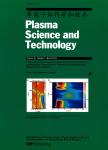Optimal design of the first stage of the platefin heat exchanger for the EAST cryogenic system
Optimal design of the first stage of the platefin heat exchanger for the EAST cryogenic system作者机构:Institute of Plasma Physics Chinese Academy of Sciences Hefei 230031 People's Republic of China University of Science and Technology of China Hetel 230026 People s Republic of China
出 版 物:《Plasma Science and Technology》 (等离子体科学和技术(英文版))
年 卷 期:2018年第20卷第3期
页 面:163-171页
核心收录:
学科分类:08[工学] 0827[工学-核科学与技术] 082701[工学-核能科学与工程] 0805[工学-材料科学与工程(可授工学、理学学位)] 0702[理学-物理学]
基 金:supported by funds of the Science Foundation within the Institute of Plasma Physics Chinese Academy of Sciences(No.Y32ETY130B)
主 题:EAST cryogenic system plate-fin heat exchanger optimization genetic algorithm
摘 要:The size of the heat exchanger is an important factor determining the dimensions of the cold box in helium cryogenic systems. In this paper, a counter-flow multi-stream plate-fin heat exchanger is optimized by means of a spatial interpolation method coupled with a hybrid genetic algorithm.Compared with empirical correlations, this spatial interpolation algorithm based on a kriging model can be adopted to more precisely predict the Colburn heat transfer factors and Fanning friction factors of offset-strip fins. Moreover, strict computational fluid dynamics simulations can be carried out to predict the heat transfer and friction performance in the absence of reliable experimental data. Within the constraints of heat exchange requirements, maximum allowable pressure drop, existing manufacturing techniques and structural strength, a mathematical model of an optimized design with discrete and continuous variables based on a hybrid genetic algorithm is established in order to minimize the volume. The results show that for the first-stage heat exchanger in the EAST refrigerator, the structural size could be decreased from the original2.200?×?0.600?×?0.627(m^3) to the optimized 1.854?×?0.420?×?0.340(m3), with a large reduction in volume. The current work demonstrates that the proposed method could be a useful tool to achieve optimization in an actual engineering project during the practical design process.



